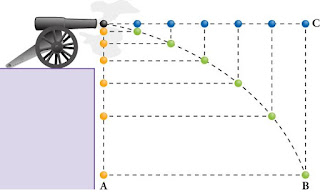Lab sheet for students for Radioactive Half-lives (for introductory class) More advanced lab sheet for Radioactive Half-lives
Radioactivity is one of those words that largely scares people. It isn't always a bad thing, in fact our own bodies have radioactive materials in them! This term refers to the process of certain atomic nuclei spontaneously and randomly breaking down, where the parent nucleus decays/splits apart into other pieces. The 'stuff' that comes out of that decay process is radiation. Most radioactive processes result in one of three types of radiation being emitted from the material: alpha, beta, and gamma particles.
Alpha particles consist of 2 protons and 2 neutrons (a helium nucleus). Beta particles/rays are electrons coming from the nucleus, as a result of a neutron decaying into a proton and electron (yes, neutrons are radioactive). Gamma rays are high-energy photons coming from the nucleus.
One of the key properties of radioactive materials is their half-life. This is the time it takes an initial sample of a radioactive material to have half of that material decay. So if a half-life is 1 year, a 10 kilogram sample of the material will decay and about 5 kilograms will remain. In another year, only around 2.5 kilograms will remain. In another year, only around 1.25 kilograms will remain, and so on. Half lives can ranges from fractions of seconds to over a billion years!
This lesson requires any large number of 2-sided items, such as coins or even a deck or two of playing cards. If you have certain candies available, such as M&Ms or Skittles, those can be used and students can eat them once done. Each time you have a cup-full of the items (it is ideal to have around 100 items for a small group of students to use as their 'radioactive sample'), that would represent one decay cycle over a half-life period. One side of the coins or candies represent an atom that decayed, and the other side means the atom is still 'alive.' Students count and keep the alive atoms, spill them again, and repeat until all atoms have decayed/died. Graphing the number of alive atoms to the spill number (i.e. how many half lives have gone by), students get the curve scientists use to determine how old certain fossils and other items are when they find them. It is an interesting procedure and method for doing this type of work!






